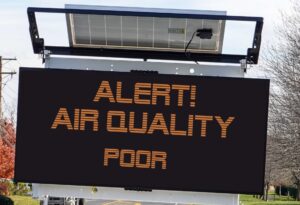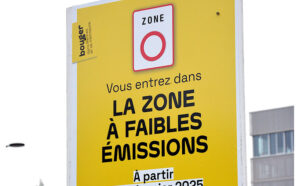Bath and North East Somerset Council have published their 2023 Bath Clean Air Zone Report which shows that NO2 levels in 2023 were 32% lower than those in 2019, representing a reduction of 10.5 μg/m³ over those four years.
Those levels were also seen to have fallen 8% in the previous 12 months.
The Council launched a class C Clean air zone in Bath’s city centre on 15 March 2021, meaning private cars were unaffected by the CAZ. It was the UK’s first Clean Air Zone outside London
The report also reveals that no sites in the zone exceeded 40 µg/m³ as an annual average, compared to 10 such breaches in 2019.
In terms of compliance, the number of polluting vehicles entering the CAZ has fallen 73% since the first week of its operation.
The council introduced a £9.4 million Financial Assistance Scheme to help local businesses and individuals replace polluting
vehicles.
Owners of over 1,500 vehicles applied for a grant to upgrade or retrofit their vehicle, with 947 being replaced by the end of 2023.
781 vans and 110 taxis/private hire vehicles have now been replaced with cleaner, compliant ones via the scheme.
Two Air Quality Management Areas (AQMAs) for NO2were revoked in June 2024, with just three remaining, covering the major road network in Bath and sections of the A37 in Temple Cloud and Farrington Gurney.
Councillor Sarah Warren, deputy Leader and cabinet member for Climate Emergency and Sustainable Travel, said: ‘It’s fantastic to see from these two reports that Bath and North East Somerset is continuing to see a fall in air pollution, which means we are all breathing cleaner air and having the impact on our health reduced.
‘It’s reassuring that the CAZ is still working to improve air quality outside of the zone as well as within it, that non-compliance has decreased by 73% since 2021 and that 947 polluting vehicles have been replaced under our financial assistance scheme. It is also good news for the whole of Bath and North East Somerset that nitrogen dioxide and particulates are below the annual objectives and that two previously declared Air Quality Management Areas are no longer needed.’
Days earlier, the council published their Climate and Nature Emergency Progress Report which showed that there had been a 39% reduction in emissions across B&NES between 2005 and 2023, and a 36% reduction in the council’s own emissions between 2016/17 and 2023/24.
















Leave a Reply